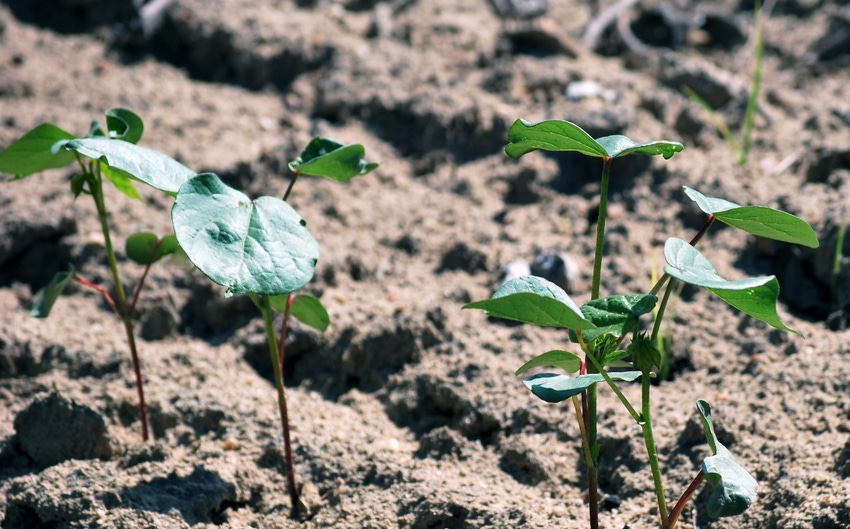
Some cotton growers have been unable to apply a timely first post-emergence herbicide application, and any delay can matter against pigweed. And the time of day in which the application is made matters, too.
Across much of the lower Southeast, the last two weeks of May haven’t been perfect pigweed-fighting weather. Though the region was on the verge of troubling drought as May started, it got wet and messy quick in some locations, which included excessive rain from an early season tropical storm.
Last year, Stanley Culpepper, University of Georgia Extension weed specialist, tested how important a timely first post-emergence herbicide application can be for the control of pigweed in cotton.
He compared an auxin-based system — with dicamba or 2,4-D — and a Liberty-based system in southwest Georgia. Both systems work well to manage pigweed, he said, if a the grower can be timely.
For both systems, he planted the cotton into weed-free plots and applied a pre-emergence residual of Warrant plus Direx at-planting. He then applied a Post 1 herbicide applications to part of the test, hitting the auxin-tolerant technology with Roundup plus the auxin and hit the Liberty tolerant-technology with Liberty. He did this before the tallest pigweed in that part of the trial reached three inches, which was about 15 days after planting.
One part of the trial didn’t receive a timely less-then-three-inch-pigweed Post 1 application of either the auxin or the Liberty, and that cotton didn’t get that first post application of either herbicides until eight days after the cotton that did get the timely first applications. For both the timely and untimely systems, a successive POST application was made two weeks after the first application.
By mid-July, the timely auxin and timely Liberty systems looked good with cotton growing strong and weed free.
The auxin-system cotton that didn’t get the timely Post 1 application had a few large pigweeds by mid-July, which Culpepper figured would cost a real-world grower about $15 per acre in hand weeding to eliminate.
The Liberty system that didn’t get the timely Post 1 application was dominated by pigweed and might cost more than $100 per acre to hand weed the escapes out of a real field under a similar scenario.
A group of scientist a few year ago from UGA, Louisiana State University, Mississippi State University, North Carolina State University and the University of Tennessee conducted tests to see if the time of day a herbicide is applied makes a difference against pigweed. Turns out it does and the information remains relevant today, said Culpepper, who participated in the study.
Researchers applied Liberty one hour before sunrise, a half-hour before sunrise, at sunrise and so on up to six hours after sunrise. On the other end of the day, applications were made one hour before sunset and up to six hours after sunset.
Liberty applications made early in the morning when the wind's not blowing typically gives much less control than that same application later in the day.
The group did comparable studies with Roundup, 2,4-D and dicamba that produced similar results, but the spray schedules were not as intensive as with the Liberty project.
In addition to Liberty being sensitive to the time of day in which it is sprayed that scientist are learning that cloudy overcast skies also reduce the activity of Liberty. The number of sunny hours in a day, or a few days surrounding application, often greatly influence Palmer amaranth's response to Liberty.
Culpepper also urged growers to run a layby rig and include product such as diuron. And most importantly, and it might be tempting to do because of delays this year, don’t rely too strongly on one herbicide. Stick with the systems approach. Farming communities do not need additional pigweed resistance.
About the Author(s)
You May Also Like






